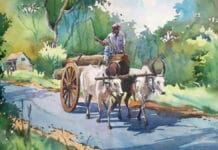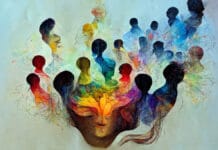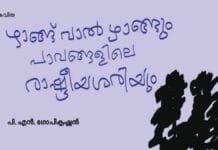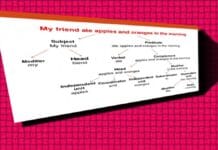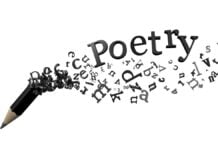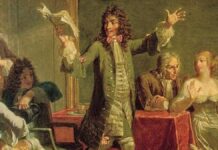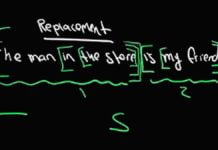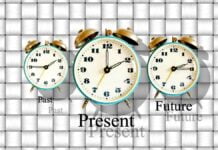Henry Wadsworth Longfellow is an American poet known for his lyrical and introspective works. The Arrow and the Song is a beautiful poem about the contrast between an “arrow” and a “song”. This metaphorical piece portrays the arrow as a symbol of hatred and enmity. Meanwhile, the song is a symbol of amiability and love. By contrasting both of these ideas along with their reach and acceptability, Longfellow projects the latter’s superiority. Song or poetry can touch several hearts. At the same time, hatred can only produce the feeling of revenge in one’s heart.
Summary
The Arrow and the Song reflects on the consequences of our actions and the enduring impact of human connections. The speaker begins by recounting how they shot an arrow into the air and sang a song, both disappearing. Despite not knowing where the arrow or the song ended up, the speaker trusts that they will have some effect, even if unseen or unknown.
Years later, the speaker discovers the arrow lodged in an oak tree and hears the song echoing in the heart of a friend. This discovery emphasizes the interconnectedness of human experience and suggests that our actions can have a lasting impact on others, no matter how small or seemingly insignificant.
In essence, The Arrow and the Song convey the idea that our actions, like arrows shot into the air or songs sung into the wind, may seem to disappear into the void, but they can leave a lasting imprint on the world and on the hearts of those we encounter along the way. The poem celebrates the power of human connection and the ripple effects of our words and deeds, highlighting the enduring legacy of friendship and harmony.
Analysis
The poem symbolically explores the notions of actions and their consequences. The arrow represents actions or words put out into the world, often without knowing where they will land or what impact they will have. Meanwhile, the song represents the thoughts, expressions, and creativity one share, which can resonate and be kept alive in the hearts and memories of others.
The Arrow and the Song reflect on the enduring and far-reaching effects of our actions and expressions, especially those cast out without immediate feedback or understanding of their eventual destination or impact.

Themes
The Arrow and the Song taps into humanity, revenge, compassion, love, and friendliness. Through this poem, Longfellow contrasts being friendly and compassionate with being spiteful. The words of love stay with us forever. They remind us of the person who told us those words. At the same time, a person who is hateful towards others is remembered in a similar vein. A person does not ever love such a person. Longfellow highlights this point by using the symbols of an arrow and a song. The song represents humanity, love, and compassion. The arrow is portrayed as a symbol of revenge and hatred.
Tone and Mood
The tone of the overall poem is inspirational, insightful, emotive, and thoughtful. In the first stanza, the tone dominant tone is spiteful. Here, the speaker talks about shooting an arrow into the air. It is not clear why he does so. The arrow is an instrument for hurting someone. So, through its symbolic meaning, readers can sense the tone of this section.
Meanwhile, in the second stanza, the tone is filled with compassion and hope. This stanza describes how the speaker sings a beautiful song with all his heart. In the last stanza, the poet contrasts their impact. Here, the tone becomes insightful and inspirational.
Symbolism and Imagery
Longfellow employs powerful symbolism and imagery to convey his message. The arrow and the song serve as metaphors for human actions and expressions. The arrow represents tangible actions, while the song symbolizes intangible expressions of emotion or creativity. By juxtaposing these two symbols, the poet underscores the idea that our actions and words can have a lasting impact, though they may seem fleeting.
Exploration of Consequences
The poem explores the theme of consequences and the ripple effects of our actions. While the speaker may not see where the arrow or the song ultimately ends up, they trust it will have some impact, even if unseen or unknown. This highlights that every action we take, no matter how small, can have far-reaching consequences that resonate beyond immediate perception.
Interconnectedness of Humanity
Through the discovery of the arrow in the oak tree and the echo of the song in the heart of a friend, Longfellow emphasizes the interconnectedness of human experience. The poem suggests that our actions and expressions are not isolated events but are part of a larger tapestry of human connection. This celebration of human interconnectedness underscores the importance of empathy, compassion, and understanding in our interactions.
Legacy and Remembrance
The Arrow and the Song also touches on legacy and remembrance. Despite the passing of time and the seeming disappearance of the arrow and the song, the speaker discovers traces of their actions and expressions years later. This suggests that our words and deeds, though others may forget them, leave an indelible mark on the world and continue to resonate long after we are gone.
The Arrow and the Song is a deceptively simple poem that carries profound themes of human connection, legacy, and the unseen impact of our actions. Longfellow’s timeless message reminds readers of the importance of mindfulness, kindness, and the recognition of the interconnectedness of all beings.








